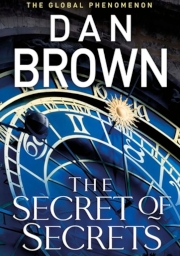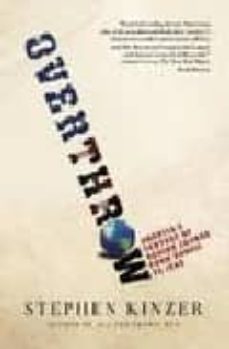Imprescindibles
Ficción
No Ficción
Ciencias y tecnología Biología Ciencias Ciencias naturales Divulgación científica Informática Ingeniería Matemáticas Medicina Salud y dietas Filología Biblioteconomía Estudios filológicos Estudios lingüísticos Estudios literarios Historia y crítica de la Literatura
Humanidades Autoayuda y espiritualidad Ciencias humanas Derecho Economía y Empresa Psicología y Pedagogía Filosofía Sociología Historia Arqueología Biografías Historia de España Historia Universal Historia por países
Infantil
Juvenil
#Jóvenes lectores Narrativa juvenil Clásicos adaptados Libros Wattpad Libros Booktok Libros de influencers Libros de Youtubers Libros Spicy Juveniles Libros LGTBIQ+ Temas sociales Libros ciencia ficción Libros de acción y aventura Cómic y manga juvenil Cómic juvenil Manga Shonen Manga Shojo Autores destacados Jennifer L. Armentrout Eloy Moreno Nerea Llanes Hannah Nicole Maehrer
Libros de fantasía Cozy Fantasy Dark academia Hadas y Fae Romantasy Royal Fantasy Urban Fantasy Vampiros y hombres lobo Otros Misterio y terror Cozy mistery Policiaca Spooky Terror Thriller y suspense Otros
Libros románticos y de amor Dark Romance Clean Romance Cowboy Romance Mafia y amor Romance dramatico Romcom libros Sport Romance Otros Clichés Enemies to Lovers Friends to Lovers Hermanastros Slow Burn Fake Dating Triángulo amoroso
Cómic y manga
Novela gráfica Novela gráfica americana Novela gráfica europea Novela gráfica de otros países Personajes, series y sagas Series y sagas Star Wars Superhéroes Cómics DC Cómics Marvel Cómics otros superhéroes Cómics Valiant
eBooks
Literatura Contemporánea Narrativa fantástica Novela de ciencia ficción Novela de terror Novela histórica Novela negra Novela romántica y erótica Juvenil Más de 13 años Más de 15 años Infantil eBooks infantiles
Humanidades Autoayuda y espiritualidad Ciencias humanas Economía y Empresa Psicología y Pedagogía Filosofía Historia Historia de España Historia Universal Arte Cine Música Historia del arte
Ciencia y tecnología Ciencias naturales Divulgación científica Medicina Salud y dietas Filología Estudios lingüísticos Estudios literarios Historia y crítica de la Literatura Estilo de vida Cocina Guías de viaje Ocio y deportes
Stephen Kinzer
Recibe novedades de STEPHEN KINZER directamente en tu email
Filtros
Del 1 al 3 de 3
DEBATE 9788483066263
La brillante reconstrucción que hace Kinzer del golpe en Irán resulta aún más fascinante por el hecho de ser verdad.Irán, agosto de 1953. El control del petróleo está en juego. El primer ministro democraticamente elegido, Mossadegh, ha nacionalizado la Anglo-Iranian Oil Company con el consiguiente revuelo de las potencias occidentales. Gran Bretaña convence a Eisenhower, presidente de Estados Unidos, de que Iran camina hacia el comunismo. La CIA toma el mando de las operaciones y provoca un golpe de Estado que restaurara la monarquia en la figura del sha Muhammad Reza. Este impondra una tirania que se prolongara -sirviendo a los intereses de Estado Unidos- hasta 1979, año de la revolucion islamica encabezada por el ayatola Jomeini, un movimiento radical que inspirara buena parte de los fundamentalismos y del antiamericanismo que atraviesan el mundo islamico.Esta es la trama que Kinzer -veterano corresponsal delNew York Times- reconstruye como si de un thriller politico se tratase. Con un ritmo imparable desfilan por estas paginas espias, saboteadores, agentes secretos y militares mientras se describen sobornos, falsos levantamientos populares y maletas llenas de billetes. Entre los personajes encontramos a un joven sha aterrorizado, un agente de la CIA, Kermit Roosevelt, nieto del presidente Roosevelt, y al mismo general Norman Schwarzkopf, padre del comandante en jefe de la guerra del Golfo.No es muy descabellado -sostiene Kinzer- trazar una linea que una el golpe de estado de la CIA, pasando por el regimen represivo del sha y la revolucion islamica, con los atentados suicidas que derribaron las Torres Gemelas de Nueva York.Reseñas:La brillante reconstruccion que hace Kinzer del golpe en Iran resulta aun mas fascinante por el hecho de ser verdad.Gore VidalUn caso de estudio perfectamente investigado sobre la absurda locura de la "construccion nacional". Los lectores britanicos y estadounidenses deberian enrojecer de verguenza.John le Carre
Ver más
Tapa dura
HENRY HOLT AND COMPANY 9780805082401
An award-winning author tells the stories of the audacious American politicians, military commanders, and business executives who took it upon themselves to depose monarchs, presidents, and prime ministers of other countries with disastrous long-term consequences. "Detailed, passionate and convincing . . . with] the pace and grip of a good thriller."--Anatol Lieven, "The New York Times Book Review" "Regime change" did not begin with the administration of George W. Bush, but has been an integral part of U.S. foreign policy for more than one hundred years. Starting with the toppling of the Hawaiian monarchy in 1893, the United States has not hesitated to overthrow governments that stood in the way of its political and economic goals. The invasion of Iraq in 2003 is but the latest example of the dangers inherent in these operations. In "Overthrow," Stephen Kinzer tells the stories of the audacious politicians, spies, military commanders, and business executives who took it upon themselves to depose foreign regimes. He details the three eras of America's regime-change century--the imperial era, which brought Cuba, Puerto Rico, the Philippines, Nicaragua, and Honduras under America's sway; the cold war era, which employed covert action against Iran, Guatemala, South Vietnam, and Chile; and the invasion era, which saw American troops toppling governments in Grenada, Panama, Afghanistan, and Iraq. Kinzer explains why the U.S. government has pursued these operations and why so many of them have had disastrous long-term consequences, making "Overthrow" a cautionary tale that serves as an urgent warning as the United States seeks to define its role in the modern world.
Ver más
Tapa blanda
TIGRE DE PAPER EDICIONS 9788416855513
"Forçar canvis de governs forma part de la política exterior dels Estats Units des de fa més de cent anys. Començant amb lenderrocament de la monarquia hawaiana el 1893 i arribant fins als nost
Ver más
Tapa blanda
Del 1 al 3 de 3


























